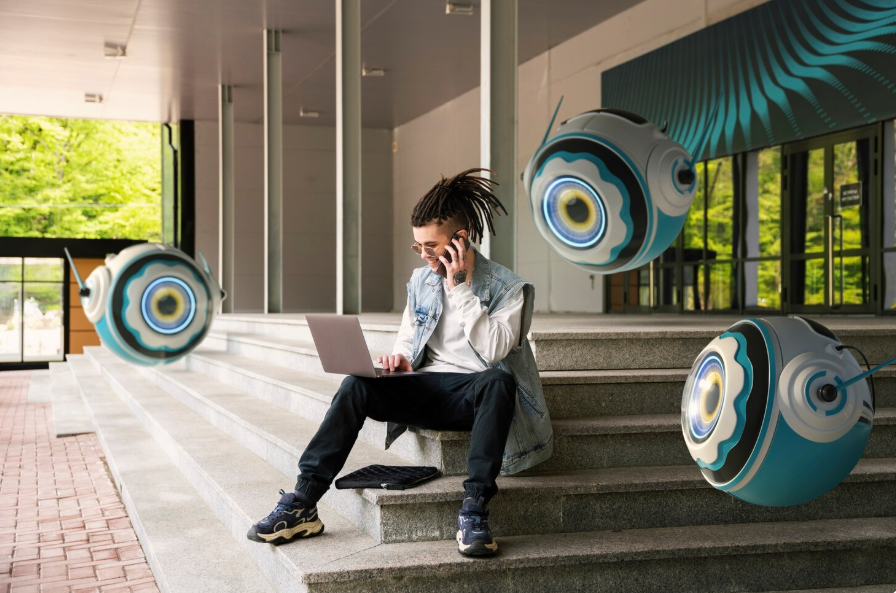Blog
The Power of Experience Driven Approaches in Modern Life

In today’s fast-changing world, people no longer seek just products or services; they crave experiences that leave lasting impressions. The term experience driven has emerged to describe strategies, designs, and philosophies that prioritize human emotions, interactions, and journeys over mere functionality. Whether in business, education, healthcare, or technology, being experience driven means shaping outcomes around what people truly feel, value, and remember.
Understanding the Meaning of Experience Driven
Being experience driven is about putting people at the center of decision-making. Instead of focusing only on efficiency or profit, organizations and individuals emphasize how an interaction makes someone feel. This could mean creating a smoother online shopping experience, designing hospitals that reduce patient stress, or building classrooms that inspire curiosity. The central idea is that positive experiences create deeper loyalty and stronger connections.
Why Experiences Matter More Than Products
Products can be copied, services can be improved, but experiences are unique. A good experience resonates with people on an emotional level, making it far more memorable than a product feature. For example, customers may forget the exact specifications of a phone, but they will always remember how effortlessly it helped them connect with others or how enjoyable the buying process was. Experiences build trust, which becomes the foundation of long-term relationships.
The Role of Emotions in Experience Driven Thinking
Emotions are at the core of being experience driven. Every decision we make, consciously or subconsciously, is influenced by how we feel. Businesses and individuals who understand this can design experiences that evoke positive emotions such as joy, excitement, or comfort. For instance, a coffee shop that remembers your usual order creates a sense of belonging, while a teacher who encourages curiosity leaves students with a lifelong love for learning.
Customer Experience in Business
In the business world, customer experience has become the ultimate competitive edge. Companies no longer compete on price alone; instead, they win by offering smooth, personalized, and delightful journeys. From intuitive apps to responsive customer service, every interaction shapes how people view a brand. Experience driven businesses often have higher customer loyalty, better word-of-mouth marketing, and long-term growth.
Employee Experience in the Workplace
Being experience driven is not limited to customers. Employees, too, thrive in workplaces that value their experience. Modern organizations focus on creating positive work environments where individuals feel respected, motivated, and engaged. Flexible work arrangements, recognition programs, and meaningful career development all contribute to a better employee experience, which in turn improves productivity and reduces turnover.
Education Through Experience
Traditional teaching methods often focus on memorization, but experience driven education emphasizes real-world application and engagement. Students learn best when they actively participate, experiment, and relate lessons to their own lives. For example, project-based learning, interactive simulations, and fieldwork transform abstract concepts into meaningful knowledge. Experience driven education creates learners who are not only informed but also adaptable and creative.
Healthcare and Patient Experience
Healthcare is another sector being transformed by experience driven practices. Beyond medical treatment, patients seek compassion, communication, and comfort. Hospitals that reduce waiting times, involve patients in decisions, and design welcoming environments provide care that feels more human. A positive patient experience not only improves satisfaction but can also accelerate recovery and build trust in healthcare providers.
Technology and User Experience
Technology has made the term “user experience” a standard phrase in product design. Being experience driven in technology means building systems that are intuitive, reliable, and even enjoyable to use. Whether it’s a smartphone app, a website, or smart home devices, people prefer solutions that simplify life without adding frustration. Companies that prioritize user experience often dominate markets because they understand that usability is just as important as innovation.
Experience Driven Marketing
Marketing has shifted from pushing products to creating meaningful experiences. Brands engage customers through storytelling, interactive campaigns, and community-building activities. For example, instead of merely advertising a shoe, a brand might invite customers to share their running journeys, turning the product into part of a larger experience. Experience driven marketing builds emotional bonds that traditional advertising cannot achieve.
The Role of Design in Experience Driven Approaches
Design plays a crucial role in shaping experiences. Every detail, from colors and layouts to navigation and flow, influences how people interact with a product or service. Experience driven design goes beyond aesthetics—it focuses on usability, accessibility, and emotional impact. A well-designed hotel lobby, for instance, doesn’t just look beautiful; it makes guests feel welcome, relaxed, and valued.
Challenges of Being Experience Driven
While being experience driven offers many benefits, it also comes with challenges. Designing meaningful experiences requires time, creativity, and resources. Measuring experiences is often harder than tracking sales or efficiency. Additionally, expectations are constantly evolving, which means organizations must stay adaptable. Despite these challenges, the rewards of stronger loyalty, deeper engagement, and long-term success make it worth the effort.
Experience Driven Leadership

Leadership that prioritizes experiences transforms organizations. Leaders who focus on empathy, communication, and vision create cultures where people thrive. They listen actively, encourage collaboration, and empower others to contribute meaningfully. Experience driven leaders understand that success is not just about outcomes but also about the journey that employees and customers take along the way.
Future of Experience Driven Approaches
The future will increasingly belong to experience driven strategies. As technology advances and choices multiply, people will gravitate toward businesses, schools, and systems that value their experiences. Artificial intelligence, virtual reality, and personalized data will make it possible to design even more tailored and immersive experiences. The organizations that succeed will be those that see beyond products and focus on human-centered journeys.
Conclusion
Being experience driven is more than a trend; it is a philosophy that reshapes how we live, work, and connect. From businesses and classrooms to hospitals and workplaces, prioritizing experiences creates deeper meaning and stronger relationships. It reminds us that at the core of every system lies a human being with emotions, values, and desires. Embracing experience driven thinking is not just good for success—it’s essential for building a more connected and compassionate world.
FAQs
Q1: What does experience driven mean in simple terms?
It means focusing on how people feel and interact with a product, service, or situation rather than just the outcome.
Q2: How does being experience driven benefit businesses?
It builds customer loyalty, improves reputation, and creates long-term growth through positive emotional connections.
Q3: Can experience driven approaches apply outside of business?
Yes, they are valuable in education, healthcare, leadership, and personal development.
Q4: What are examples of experience driven design?
Examples include user-friendly apps, welcoming hospital environments, and interactive classroom methods.
Q5: What is the future of experience driven strategies?
They will evolve with technology, offering more personalized and immersive experiences across all sectors.
-

 Tech1 year ago
Tech1 year agoHow to Use a Temporary Number for WhatsApp
-

 Business2 years ago
Business2 years agoSepatuindonesia.com | Best Online Store in Indonesia
-

 Social Media1 year ago
Social Media1 year agoThe Best Methods to Download TikTok Videos Using SnapTik
-

 Technology1 year ago
Technology1 year agoTop High Paying Affiliate Programs
-

 Tech10 months ago
Tech10 months agoUnderstanding thejavasea.me Leaks Aio-TLP: A Comprehensive Guide
-

 FOOD12 months ago
FOOD12 months agoHow to Identify Pure Desi Ghee? Ultimate Guidelines for Purchasing Authentic Ghee Online
-

 Instagram3 years ago
Instagram3 years agoFree Instagram Auto Follower Without Login
-

 Instagram3 years ago
Instagram3 years agoFree Instagram Follower Without Login




















